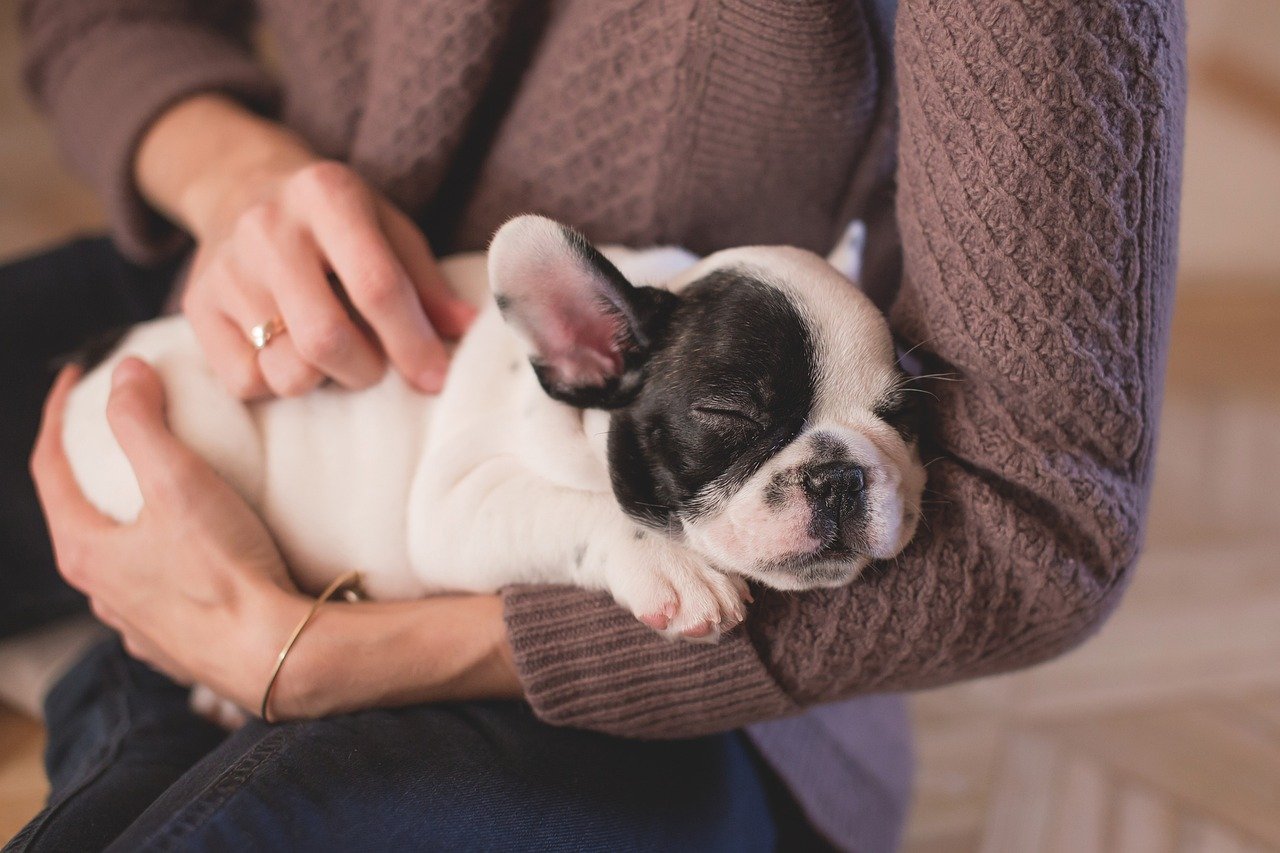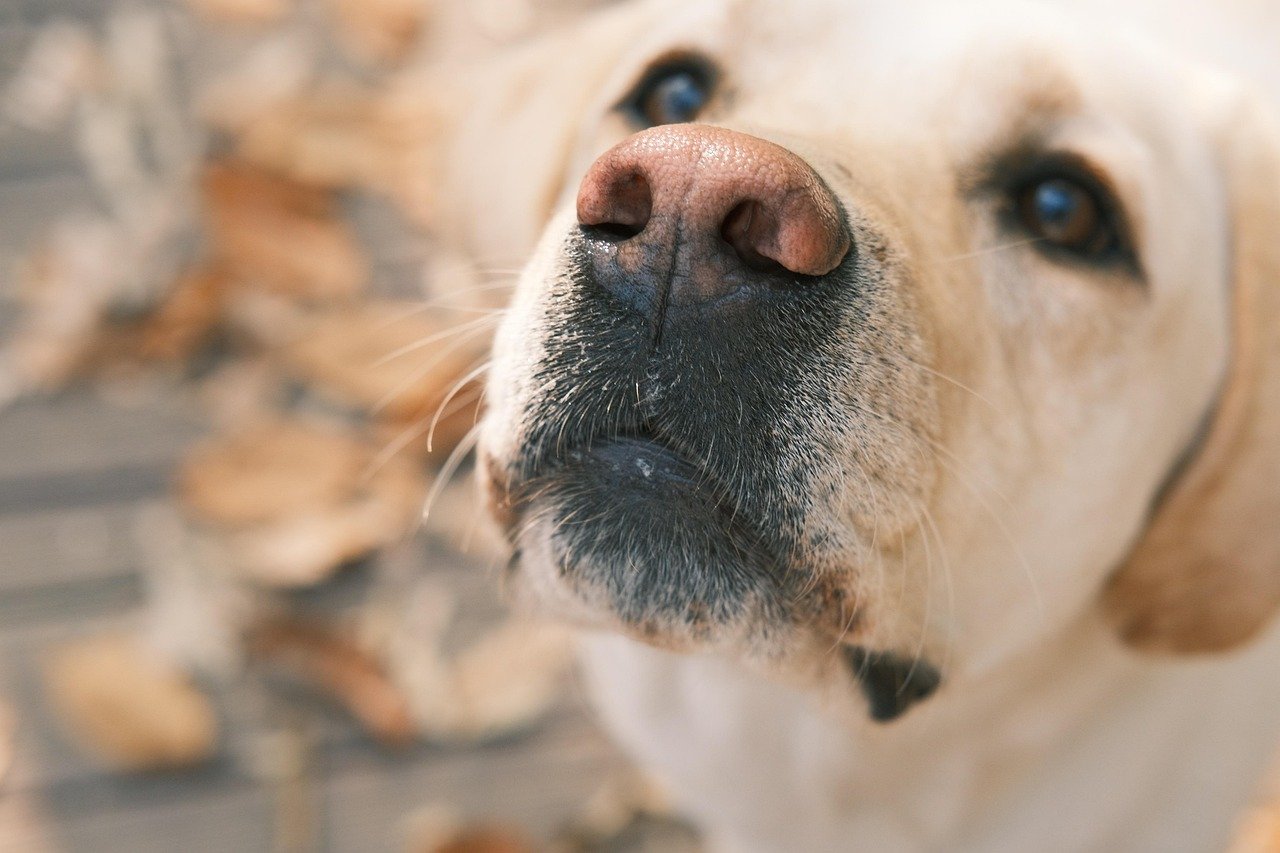Dogs may not speak our language, but they have an incredible way of knowing when something’s off—and showing they care. When you’re feeling low, your pup might curl up beside you, offering quiet support just by being close. They’ll often rest their head on your lap, lick your hands, or lean into you, picking up on your mood without a single word. Some dogs bring you their favorite toy as if to say, “I’m here, let’s feel better together.” You might even notice them watching you more closely or staying by your side when you’re upset. These gestures may seem small, but they’re your dog’s way of offering love, comfort, and connection—without needing to say a thing.
1. Snuggling Up Close

When life gets overwhelming, your dog often senses your stress before you even say a word. One of their favorite ways to comfort is by snuggling up close. They might curl against your legs on the couch, lay their head on your lap, or even press their body against yours in bed. This physical closeness isn’t just about warmth; it’s a soothing gesture, a canine hug that says, “You’re not alone.” I remember a night when I was worried about a big decision, and my dog quietly nestled at my side, her steady breathing lulling me out of my thoughts and into a moment of peace.
Some experts believe this behavior is rooted in the way dogs bond with their pack. In the wild, close contact means security and trust. At home, your dog’s gentle pressure against your side is their way of sharing that same sense of safety. It’s as if they’re wrapping you up in a blanket of fur and love, letting you know they’re right there with you through thick and thin.
2. Bringing You Their Favorite Toy
It might seem silly when your dog drops a slobbery tennis ball at your feet while you’re upset, but this is their way of reaching out. Dogs often bring their favorite toys to those they love, especially when they sense sadness. It’s a gesture packed with meaning: “I want to share what makes me happy with you.” The toy isn’t just a plaything; it’s a symbol of trust and an invitation to connect.
Sometimes, it’s almost as if they’re saying, “If this squeaky duck can make me feel better, maybe it’ll help you too.” For dogs, play is a powerful stress reliever. Offering a toy is their way of encouraging you to join in, to let go of worries for a moment, and to remember that there’s still joy to be found—even on tough days.
3. Licking Your Face or Hands
Licking is one of the most instinctive, nurturing actions in a dog’s toolkit. When your dog licks your face or hands during moments of sadness, they’re tapping into a behavior that started as puppies, when their mothers would groom and comfort them with gentle licks. For dogs, licking is a sign of affection, reassurance, and care.
This simple act can feel almost magical—it’s warm, wet, and impossible not to smile at, even when you’re feeling down. It’s their way of saying, “I see you’re hurting, and I want to help.” Research even suggests that being licked by your dog can trigger the release of feel-good hormones, deepening the bond between you and lightening your mood, even if only for a moment.
4. Following You Around the House
Ever notice how your dog seems glued to your side when you’re having a rough day? Dogs are experts at reading body language and picking up on subtle changes in our tone or posture. When they sense you’re upset, they may quietly shadow your every step—from the kitchen to the bathroom and back again.
This loyal trailing is their silent way of saying, “I won’t leave you alone.” It’s an offer of support and companionship, a reminder that someone cares deeply about your well-being. For many dog owners, this constant presence can feel deeply reassuring. Even without a single word, your dog’s footsteps on the floor echo the steady heartbeat of unconditional love.
5. Leaning or Resting Their Head on You
There’s something incredibly grounding about the solid weight of your dog’s head on your knee or shoulder. Dogs will often lean their bodies or rest their heads on you when they sense you’re upset or anxious. This behavior is a subtle but powerful way of providing comfort—it’s as if they’re saying, “Let me carry some of that for you.”
The gentle pressure can be calming, almost like a living weighted blanket. For many, it becomes a cherished ritual—your dog’s head finding that perfect spot, their eyes looking up at you with quiet understanding. These moments become little anchors, helping you find your footing when emotions threaten to sweep you away.
6. Making Gentle Eye Contact

Dogs have an uncanny ability to communicate with their eyes. When you’re sad or stressed, your dog might sit quietly and gaze at you with a look that’s almost human in its empathy. This gentle eye contact is a powerful form of connection. Unlike a stare-down, it’s soft and reassuring, like a silent promise: “I’m here for you.”
Looking into your dog’s eyes can actually release oxytocin—the same “love hormone” that bonds parents and children. It’s a two-way street: as you look into their eyes, and they into yours, you both feel a deepening sense of trust and affection. This silent exchange can be enough to pull you out of the darkest of moods, reminding you that you’re truly seen and valued.
7. Sighing or Breathing Deeply Beside You
Have you ever noticed your dog let out a long, contented sigh while lying next to you? This gentle sound isn’t just a sign of relaxation—it’s often their way of mirroring your emotions and signaling that it’s okay to let go and breathe. Dogs are incredibly attuned to our stress levels, and by showing calmness, they invite you to slow down and join them in the present moment.
Sometimes, your dog’s deep, even breathing beside you can be more effective than any words of comfort. It’s a quiet presence that helps ground you, a living reminder to take a breath and release the tension you’re holding. It’s almost as if your dog is teaching you the art of peaceful acceptance, simply by being there and sharing the silence.
Your dog may not have the words, but their actions speak volumes. From gentle nudges to quiet cuddles, they sense your emotions and show up for you in the sweetest ways. It’s their way of saying, “I’ve got you,” without ever making a sound. In their silent loyalty, they offer a kind of comfort that only a dog can give.





